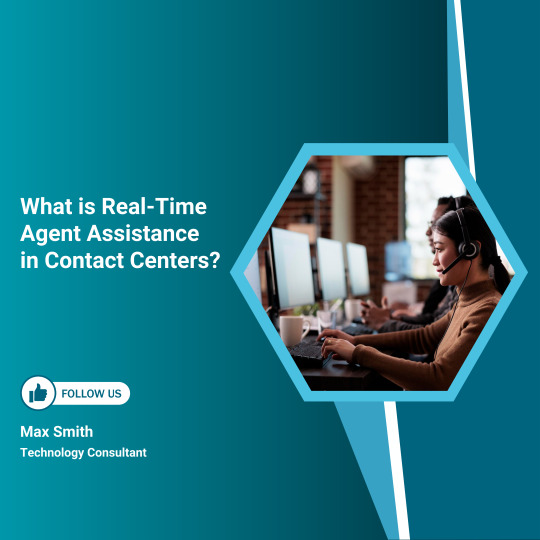#ReduceAHT
Explore tagged Tumblr posts
Text
What is Vanie LLM and how is it different from traditional AI models for contact centers?
Contact centers today face significant demands to reduce costs, enhance operations, and deliver exceptional customer experiences. Many have turned to AI, but most traditional systems rely on fixed rules or narrow machine learning that cannot keep up with the complexity of real conversations.

Vanie LLM changes this. It’s a large language model designed specifically for contact centers, offering a smarter, more flexible approach than older AI models. Unlike standard solutions that follow rigid scripts. Vanie LLM understands full conversations and adapts in real time.
How Vanie LLM stands out and impacts business
1. Tracks the entire conversation, not just keywords
Most traditional AI tools only look at short snippets or identify keywords. They miss the full back-and-forth flow of a conversation. That’s a major gap, as 65% of AI-driven responses from legacy systems fail to solve complex, multi-turn issues (Source: CCW Market Study 2025).
Vanie LLM follows the entire exchange, keeping track of context across multiple questions and answers. This helps it understand customer needs better and boosts first-contact resolution.
2. Learns from unstructured data automatically
Older AI models often depend on clean, structured data and predefined categories. They struggle to adjust without expensive manual retraining.
Vanie LLM learns directly from unstructured data—like call transcripts, chat logs, and CRM notes. This means it updates its knowledge quickly and at a lower cost.
Businesses using models like Vanie LLM have seen:
37% improvement in average handle time (AHT)
Fewer call escalations
Better operational KPIs overall (Forrester, 2025)
3. Detects subtle sentiment and compliance risks
Traditional AI may tag basic sentiment—positive or negative—but misses more subtle signals. Vanie LLM can detect complex emotions, signs of dissatisfaction, and compliance issues right as they happen.
This leads to fewer regulatory problems. For example, a contact center serving regulated industries reduced compliance breaches by 28% after using real-time monitoring with advanced language models.
4. Scales easily across all channels
Legacy AI often needs different setups for each channel—voice, chat, or email—creating silos and higher maintenance costs.
Vanie LLM works seamlessly across voice calls, chat, email and even social messaging. It helps unify the tech stack and lowers integration overhead.
Operational gains and clear ROI
Switching to LLM-driven systems delivers direct, measurable results:
15-25% lower operational costs from faster calls, less manual QA, and reduced workload
20%+ increase in CSAT scores with quicker, more accurate, and more personal service
30% faster agent ramp-up times, thanks to intelligent guidance that supports new hires from day one
Vanie LLM also gives leaders powerful insights into agent performance, common customer issues, and process bottlenecks. This supports smarter decisions and continuous improvement.
Vanie LLM’s role in transforming contact centers
Vanie LLM isn’t just a general-purpose AI—it’s built for contact centers. It avoids rigid rules, keeps learning from real conversations, and works across every channel. For organizations aiming to drive down costs, improve compliance, and build lasting customer relationships, it represents a major step forward.
Contact centers moving from outdated, rule-heavy systems to flexible, conversation-driven platforms like Vanie LLM set themselves up to meet today’s customer expectations—and gain a clear competitive edge.
#VanieLLM#ContactCenterAI#AIForContactCenters#ConversationIntelligence#RealTimeAI#Pain Points & Benefits#CustomerExperience#FirstContactResolution#ComplianceMonitoring#OperationalEfficiency#ReduceAHT#BoostCSAT#LowerOperationalCosts#SentimentDetection#AgentProductivity#Use Case and Strategy Tags#MultichannelSupport#AIInCustomerService#ContactCenterTransformation#CallCenterInnovation#NextGenCX#AIAnalytics#SmartContactCenters#AICompliance#Industry Tags#CustomerSupport#CustomerServiceTechnology#CXStrategy#ContactCenterSolutions#AIForBusiness
0 notes
Text
What is real-time agent assistance in contact centers?

Real-time agent assistance is an innovative technology that supports contact center agents during live customer interactions. It delivers instant, context-specific help, guiding agents with prompts, knowledge, and compliance checks exactly when needed. This leads to stronger operations and better customer experiences.
Contact centers face growing complexity. Customers expect fast, accurate, and tailored service. At the same time, agents must handle more products, stricter compliance rules, and rising interaction volumes. This pressure often means longer calls, more mistakes, and lower customer satisfaction.
Real-time agent assistance directly solves these issues by using AI and machine learning inside live conversations.
How real-time agent assistance impacts business
Contact centers that use real-time agent assistance see clear, measurable gains. Recent data shows:
23% shorter average handle time (AHT): Agents get quick answers and next-best-action prompts, solving problems faster.
31% boost in first contact resolution (FCR): Real-time help ensures agents fix issues fully on the first call.
27% fewer agent errors: Automated compliance alerts and script reminders cut down on costly mistakes.
19% rise in customer satisfaction (CSAT) scores: Customers receive more precise and confident support.
These improvements lower operational costs and drive more value from each customer. Shorter calls let teams handle more interactions without extra staff, while fewer escalations free up managers and specialists.
Key features that deliver these results
Top real-time agent assistance tools include:
Live speech or chat analysis: Detects keywords, customer mood, and intent to give instant guidance.
Dynamic knowledge delivery: Sends the right articles, product details, or troubleshooting tips directly to the agent’s screen.
Compliance support: Warns agents if a legal disclosure is missing or a rule might be broken.
Smart scripting: Keeps conversations consistent and ensures all needed information is collected.
On-the-spot coaching: Highlights skill gaps and recommends micro-learning content, building agent confidence during calls.
These tools help new agents ramp up faster and enable all agents to handle complex issues with less stress.
Why it’s a strategic move
Real-time agent assistance is more than just a tech upgrade. It’s a shift toward smarter, more proactive operations. Industries like banking, insurance, telecom, and healthcare rely on this to protect both brand trust and compliance.
It also lowers agent stress. Contact centers typically face 30-45% yearly agent turnover. By reducing cognitive strain, companies keep experienced agents longer, save on hiring, and maintain better service quality.
Vanie Real-Time Agent Assistance provides these benefits by training agents using AI to support them throughout each customer engagement. It is simple to integrate its platform into other systems, providing real-time insights, compliance control, and contextual recommendations. The outcomes are evident: increased productivity, reduced errors, and improved customer loyalty.
#RealTimeAgentAssistance#ContactCenterAI#CustomerExperience#AgentProductivity#CSAT#FirstContactResolution#AIinCustomerService#ContactCenterSolutions#ReduceAHT#ComplianceManagement
0 notes